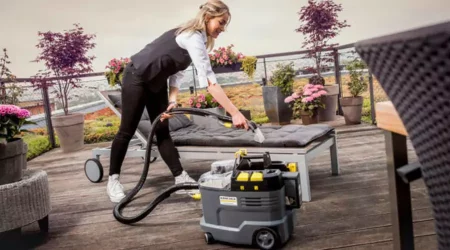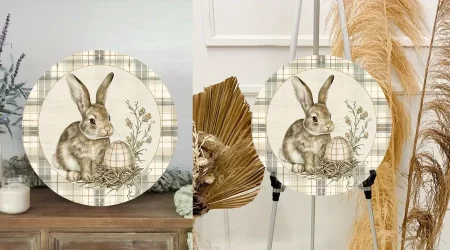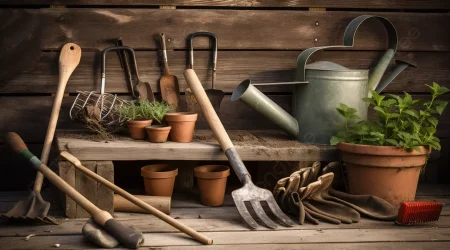Furniture is an essential part of our homes, and we all want it to last as long as possible. But, with daily use, wear and tear are inevitable. Luckily, there are simple ways to maintain your furniture and extend its life. In this ultimate guide, we’ll explore easy-to-follow tips on how to care for your furniture, regardless of the material or type. From cleaning and polishing to preventing scratches and stains, we’ve got you covered. We’ll also provide you with expert advice on how to address common issues like fading, warping, and cracking. By following these steps, you can keep your furniture looking new and beautiful for years to come. So, whether you’re a new homeowner or a seasoned pro, this guide is a must-read for anyone looking to protect their investment and enjoy their furniture for longer.
Understanding the Importance of Furniture Maintenance
Furniture maintenance is an essential aspect of homeownership, and it can help you save money in the long run. Regular maintenance can extend the life of your furniture, preventing you from having to replace it sooner than necessary. Additionally, maintaining your furniture can help improve its appearance, making it more comfortable to use and more aesthetically pleasing.
One of the primary reasons why furniture maintenance is crucial is that it helps prevent damage. By taking care of your furniture, you can reduce the risk of scratches, stains, and other types of damage that can occur over time. When you neglect your furniture, it can deteriorate quickly, making it look old and worn out. Regular maintenance can help you avoid such issues, ensuring that your furniture looks fantastic for many years.
Another reason why furniture maintenance is important is that it can improve the functionality of your furniture. By keeping your furniture clean and well-maintained, you can ensure that it continues to work correctly. This can be especially important for furniture that performs specific functions, such as a bed or a sofa. By taking care of your furniture, you can ensure that it remains comfortable and easy to use.
Finally, furniture maintenance is essential for health reasons. Over time, furniture can accumulate dust, dirt, and other allergens, which can cause respiratory issues for susceptible individuals. Regular cleaning and maintenance can help reduce the number of allergens in your home, promoting better health for you and your loved ones.
Materials and Finishes – What You Need to Know
Before you begin your furniture maintenance routine, it’s essential to understand the materials and finishes used to make your furniture. Different materials and finishes require different types of maintenance, and using the wrong techniques can cause damage. Here are some common materials and finishes used in furniture and how to care for them:
Wood: Wood furniture is beautiful, durable, and versatile. However, it requires regular maintenance to maintain its appearance and quality. To care for your wood furniture, avoid placing it in direct sunlight or near heat sources. Dust it regularly with a soft cloth, and avoid using water or harsh chemicals to clean it. Instead, use a specialized wood cleaner and polish to keep it looking its best.
Leather: Leather furniture is luxurious, comfortable, and adds a touch of elegance to any room. However, it can be challenging to maintain, especially if it’s exposed to sunlight or heat. To care for your leather furniture, avoid using water or harsh chemicals to clean it. Instead, use a specialized leather cleaner and conditioner to keep it looking supple and soft.
Fabric: Fabric furniture is comfortable, affordable, and comes in a variety of styles and colors. However, it can be challenging to clean and maintain, especially if it’s made of delicate materials. To care for your fabric furniture, vacuum it regularly to remove dust and dirt. If it’s stained, use a specialized fabric cleaner to remove the stain. Avoid using water or harsh chemicals, as they can damage the fabric.
Metal: Metal furniture is durable, lightweight, and comes in a variety of styles and finishes. However, it can be prone to rust and corrosion if not properly maintained. To care for your metal furniture, avoid exposing it to moisture and humidity. Wipe it down regularly with a soft cloth, and use a specialized metal cleaner to remove rust and stains.
Daily Care Tips for Furniture
Daily care is one of the most important aspects of furniture maintenance. By following these simple tips, you can keep your furniture looking new and beautiful every day:
1. Dust Regularly: Dusting your furniture regularly is essential for preventing scratches and scuffs. Use a soft cloth or a feather duster to remove dust and dirt from your furniture. Avoid using abrasive materials or harsh chemicals, as they can damage the finish.
2. Vacuum Fabric Furniture: If you have fabric furniture, vacuum it regularly to remove dust and dirt. This will help prevent stains and keep your furniture looking clean and fresh.
3. Protect from Sun Exposure: Direct sunlight can fade and damage furniture over time. To protect your furniture, avoid placing it in direct sunlight, or use curtains or blinds to block out the sun.
4. Use Coasters: Using coasters is an easy way to protect your furniture from water rings and stains. Place coasters under glasses and cups to prevent moisture from damaging the finish.
5. Don’t Let Stains Sit: If you spill something on your furniture, clean it up immediately to prevent stains from setting in. Use a specialized cleaner for your furniture’s material to remove the stain.
Deep Cleaning Techniques for Furniture
In addition to regular dusting and cleaning, you should deep clean your furniture periodically. Deep cleaning can help remove dirt, grime, and stains that regular cleaning can’t. Here are some deep cleaning techniques for different types of furniture:
Wood Furniture: To deep clean wood furniture, use a specialized wood cleaner and polish. Apply the cleaner to a soft cloth and wipe down the furniture, making sure to get into all the nooks and crannies. Follow up with the polish to restore the furniture’s shine.
Leather Furniture: To deep clean leather furniture, use a specialized leather cleaner and conditioner. Apply the cleaner to a soft cloth and wipe down the furniture, making sure to get into all the crevices. Follow up with the conditioner to keep the leather soft and supple.
Fabric Furniture: To deep clean fabric furniture, use a specialized fabric cleaner. Apply the cleaner to a soft cloth and wipe down the furniture, making sure to get into all the fibers. Use a clean cloth to remove any excess cleaner.
Metal Furniture: To deep clean metal furniture, use a specialized metal cleaner. Apply the cleaner to a soft cloth and wipe down the furniture, making sure to get into all the crevices. Follow up with a metal polish to restore the furniture’s shine.
Repairing and Fixing Common Furniture Issues
Over time, furniture can experience common issues like fading, warping, and cracking. Fortunately, many of these issues can be repaired or fixed with a little know-how. Here are some common furniture issues and how to address them:
Fading: If your furniture has faded over time, try using a specialized furniture restorer to restore the color. Apply the restorer to a soft cloth and wipe down the furniture, making sure to get into all the nooks and crannies.
Warping: If your furniture has warped, try placing a heavy object on top of it to flatten it out. If that doesn’t work, you may need to replace the affected piece of furniture.
Cracking: If your furniture has developed cracks, try using a specialized furniture filler to fill in the cracks. Apply the filler to the affected area and let it dry. Then sand it down until it’s smooth and even.
Protecting Your Furniture from Damage and Wear
Preventing damage and wear is essential for maintaining your furniture’s longevity. Here are some ways to protect your furniture from damage and wear:
1. Use Furniture Covers: Furniture covers can protect your furniture from dust, dirt, and other debris. They can also help prevent scratches and scuffs.
2. Use Rug Pads: Rug pads can help prevent furniture from scratching hardwood floors. They can also help keep furniture in place, preventing it from sliding around.
3. Use Furniture Pads: Furniture pads can help prevent scratches and scuffs on hardwood floors. They can also help prevent furniture from sliding around.
4. Trim Pet Nails: If you have pets, trim their nails regularly to prevent them from scratching your furniture.
Seasonal Maintenance for Furniture
Seasonal maintenance is essential for keeping your furniture looking its best throughout the year. Here are some seasonal maintenance tips for furniture:
1. Spring: In the spring, give your furniture a deep clean to remove any dirt and grime that has accumulated over the winter. This is also a good time to check for any damage and make any necessary repairs.
2. Summer: In the summer, protect your furniture from direct sunlight by using curtains or blinds. This will help prevent fading and damage caused by the sun.
3. Fall: In the fall, prepare your furniture for the cooler weather by storing it properly. This is also a good time to apply a protective coating to your furniture to prevent damage from the elements.
4. Winter: In the winter, protect your furniture from dry air by using a humidifier. This will help prevent cracking and warping caused by dry air.
Storing Furniture Properly
Storing furniture properly is essential for maintaining its longevity. Here are some tips for storing furniture:
1. Clean Your Furniture: Before storing your furniture, make sure to clean it thoroughly to remove any dirt or debris. This will help prevent damage and keep your furniture looking its best.
2. Disassemble if Possible: If your furniture can be disassembled, do so before storing it. This will make it easier to store and transport.
3. Use Furniture Covers: Use furniture covers to protect your furniture from dust, dirt, and debris while in storage.
4. Store in a Dry Place: Store your furniture in a dry place to prevent damage from moisture and humidity.
Conclusion
Maintaining your furniture is essential for keeping it looking new and beautiful for years to come. By understanding the materials and finishes used in your furniture, following daily care tips, deep cleaning periodically, and repairing and fixing common issues, you can extend your furniture’s life and protect your investment. Remember to protect your furniture from damage and wear, perform seasonal maintenance, and store your furniture properly to ensure its longevity. With these easy-to-follow tips, you can enjoy your furniture for longer and create a comfortable and inviting home.










